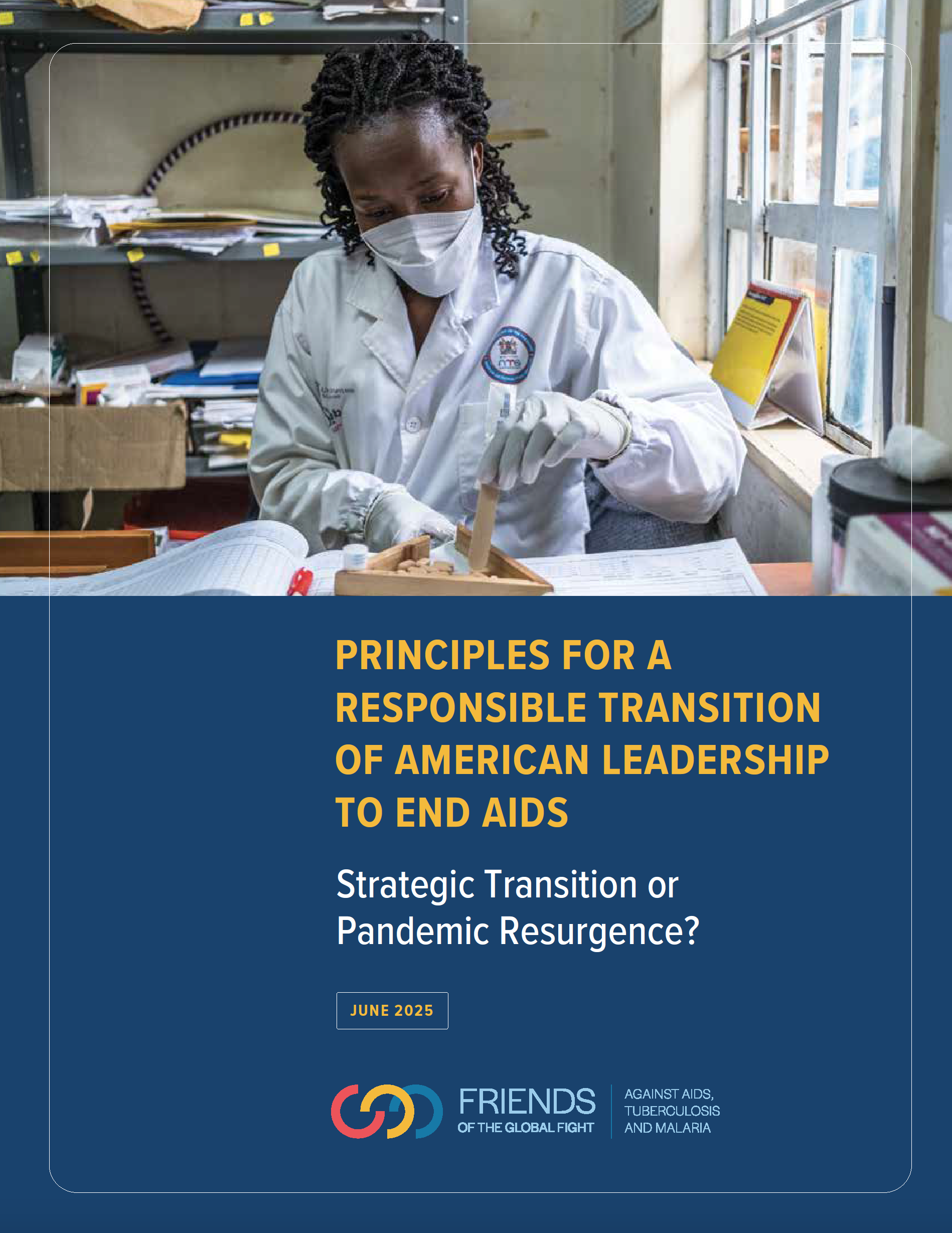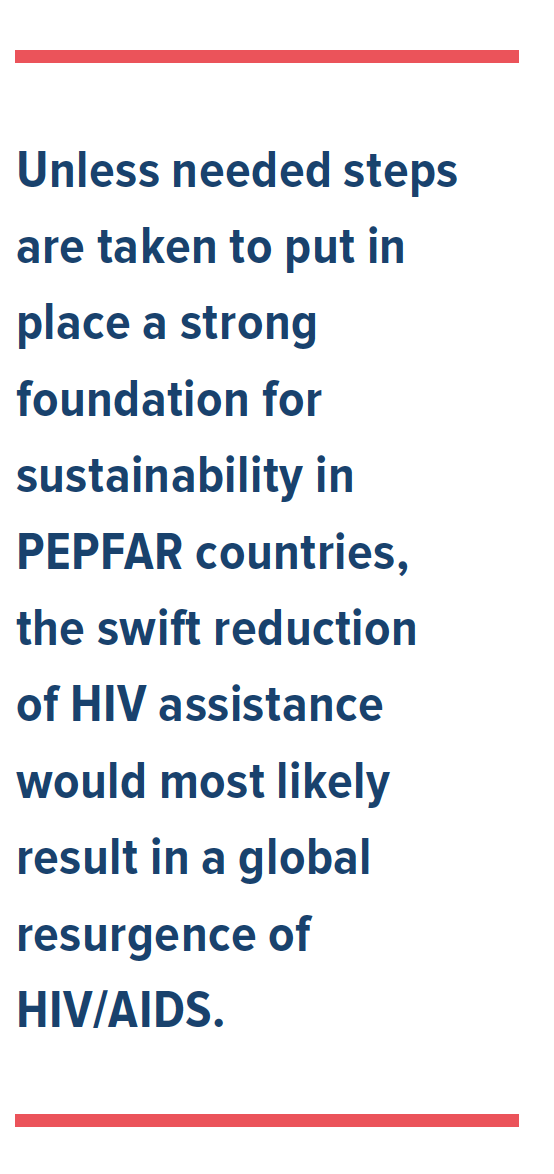June 11, 2025
NEW REPORT
Principles of a responsible transition of American leadership to end AIDS: Strategic transition or pandemic resurgence?
Thanks to historic bipartisan American leadership we now have the chance to end AIDS as a public health threat. Major progress has been made in helping countries stand on their own in financing and managing their HIV responses. The time is now to begin the transition to a new phase of PEPFAR that prioritizes sustainability and gradually draws down U.S. assistance after fiscal year 2026.
A new report from Friends of the Global Fight argues that U.S. leadership on HIV/AIDS now confronts a critical choice.
- Option 1: Introduce reforms to PEPFAR designed to accelerate transition and sustain progress — responsibly ramping down and reallocating PEPFAR assistance over time, while ensuring the most vulnerable, including children, are served.
- Option 2: Rapidly reduce PEPFAR assistance, effectively abandoning partners before they have planned and prepared to assume financial and managerial responsibility for HIV programs, likely leading to disease resurgence.
The first option is by far the most strategic and efficient choice and the one consistent with U.S. national security priorities.
The report also outlines five key principles for an accelerated, responsible transition for U.S. HIV assistance:
- Develop clear, enforceable, timebound transition compacts with partner countries. Some countries have the means to transition fully to country ownership in the coming years. The poorest and most fragile countries will require help for longer. PEPFAR should develop graduation policies based on successful models and benchmarks that gauge country readiness.
- Drive increased domestic investments in HIV programs. Policies should enable countries to assume greater financial responsibility by strengthening budgetary and taxation systems, debt relief and fully leveraging the Development Finance Corporation, multilateral development banks and the private sector. The Global Fund — the public-private partnership arm of PEPFAR — is one of the best tools for sustainability as it requires partner countries to increase their own health investments and mandates that other donors match U.S. funding two to one.
- Fully embed HIV services in inclusive national health systems. Learning from countries that have begun this transition can help other countries integrate HIV services in national systems, although dedicated service channels for some particularly vulnerable populations will likely still be needed.
- Make a strategic investment to leverage HIV prevention breakthroughs to reduce the HIV infection burden and speed transition. PEPFAR and the Global Fund should commit to deliver long-acting injectable PrEP to at least 5.4 million people by 2030, in addition to the approximately 3.5 million people who would be choosing oral PrEP, and should commit resources towards strategic investments that address settings and populations where new HIV infections are on the rise or not keeping pace with targets.
- Protect children and the most vulnerable. Transitions should be planned and managed so that communities are engaged at every step, the treatment deficit for children is resolved and services for vulnerable populations, including orphans, are protected.
As PEPFAR programs are stabilized, transitions are accelerated and long-acting HIV prevention is scaled, in fiscal year 2026 the U.S. should sustain, refocus and leverage PEPFAR funding and increase support to the Global Fund for its eighth replenishment, gradually drawing down PEPFAR funding thereafter. PEPFAR, which accounts for less than 0.09% of federal spending, is a high-impact investment, but not a forever investment.


